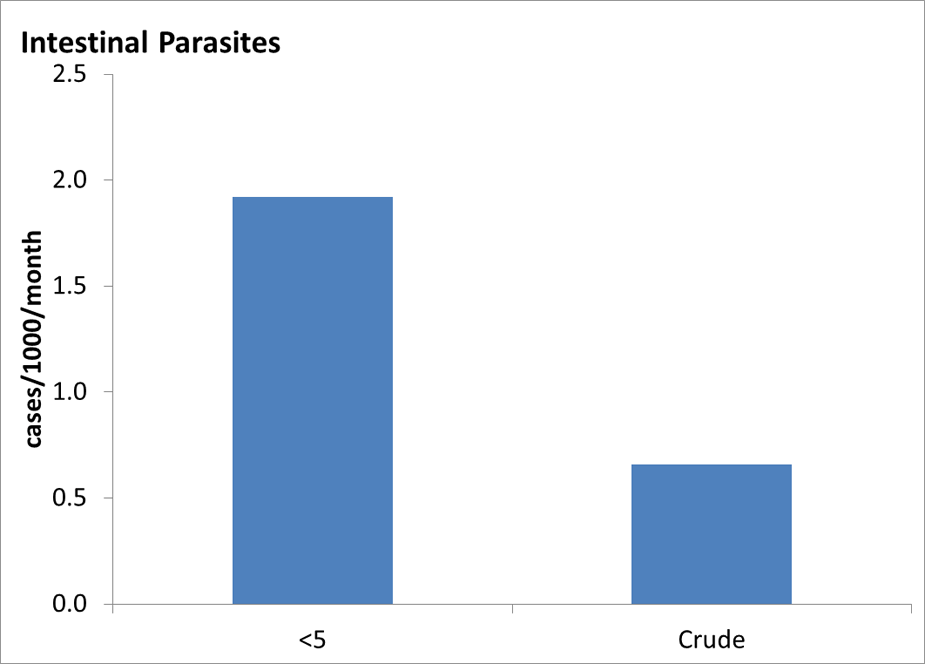Communicable Disease: Intestinal Parasites
Bhutanese Refugee Health Profile
As mentioned, resettling refugees > 1 years of age receive 400 mg of albendazole 48 hours prior to departure for the United States as a presumptive treatment for helminthiasis. Approximately 20% of new arrivals into Texas between June 2009 and May 2011 had positive ova and parasite stool samples during post-arrival screening exams. 15 Of 295 records that specified a parasite, more than 50% were positive for Giardia, 36% for Dientamoeba, 20% for Entamoeba, and 2% or less for Ascaris, Clonorchis, hookworm, Schistosoma, Strongyloides, and Trichuris. On serological tests, a more sensitive means of detecting Schistosoma and Strongyloides infection, of 272 refugees tested, 20% were positive for Strongyloides while only 2% of 64 tested were positive for Schistosoma. 15

For children under 5 years old there were approximately 2 cases of intestinal parasites per 1000 population per month. For all ages there were approximately 0.6 cases of intestinal parasites per 1000 population per month.
References
- Texas Department of State Health Services (2009-2011), Electronic System for Health Assesment of Refugees (eShare Database).
Refugee Health Guidelines
- Page last reviewed: April 7, 2014
- Page last updated: April 7, 2014
- Content source:


 ShareCompartir
ShareCompartir